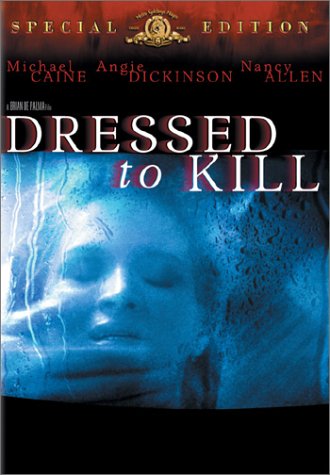Book Available: http://www.amazon.co.uk/Teenage-Wasteland-Slasher-Movie-Uncut/dp/1847734529
SOME REFERENCES AND QUOTES USED DIRECTLY FROM THE BOOK.
(some hyperlinks to wikipedia resources have been added below the text is NOT copied from Wikipedia)

Halloween
John Carpenter
1978
A psychotic murderer institutionalized since childhood for the murder of his sister, escapes and stalks a bookish teenage girl and her friends while his doctor chases him through the streets.
Irwin Yablans, a producer, approached Carpenter with his concept for "The Babysitter Murderers" in which Carpenter was overjoyed with the prospect of directing a film.
He set to work on the script with his then-girlfriend Debra Hill who went on to produce the film.
The film was budgeted at a modest $300,000. Carpenter also agreed to direct, write, compose and perform the soundtrack for just $10,000 and a percentage of the profits.
Jamie Lee Curtis was chosen to play the virginal but ultimately resourceful Laurie Strode, partly because she was the daughter of Physco star Janet Leigh. Carpenter had offered the role of DR Loomis to Peter Cushting and Christopher Lee, who both turned it down (Although Lee later said that this was the 'biggest regret of his career") Instead the role went to Donald Pleasence. Michael Myers was played by Nick Castle, Carpenters friend and director.
Halloween began shooting what was to be a tight and problematic four week schedule in May 1978. Although set in the Midwest in autumn, it was actually filmed in Calafornia in the spring, despite the trees being noticeably green and full, the production team used bags of specially painted brown leaves to give the right autumn feel.
Tommy Wallace who was in charge of the production design on the film was sent to get the perfect mask for the role of Michael Myers. The two choices were: A clown. And one made from a likeness of Startrek actor William Shatner with the eye holes cut larger and sprayed white. The moment he saw the Shatner mask, Carpenter knew that he had found the look for his boogey man.
The films most famous scene is the opening shot of the 6 year old Michael stalking his sister, who had just had sex with her boyfriend, through the Myers home. The Point Of Vuew shot was achieved by using a Panaglide camera that mimicked the natural movement. Michaels hands were actually Deborah Hills. While looking as if it was filmed in one continuous shot, it was actually 3 shots edited together.
The horror genre has always mixed up sex and violence, and Halloween is no exception. Although it is true that the virgin heroine survives, whilst her sexually ative friends die, Carpenter denies that there is a conservative political agenda at play and states that sex obsessed teenagers just pay less attention to their own personal safety. Carpenter has also said that Myers represents the revenge and the repressed.
Halloween very nearly didnt become a breakout subgenre defining film. Every major American studio (the same studio that would later be rushing to claim their slice of slasher film pie in the coming few years declined distribute to it. Carpenter showed it to the executive at 20th Century Fox (minus the music score) and she said that it 'just wasn't scary'. Yablans decided to distribute the film via his own company, Compass International.
Not all critics were positive about Halloween. Influentional "New Yorker" film critic Pauline Karel was scathering. However, her voice was in the minority. Tom Allen, in 'The Villiage Voice' said that the film could 'stand proud alongside Night Of The Living Dead and Hitchcock's Physco. Roger Ebert (who would go on to critically savage Friday The 13th two years later) praised the film as "terrifying and creepy".
Halloween became a phenomenom. It was one of the most profitable independant releases of all time with a $70M worldwide gross on its original release.
Dressed To Kill
Brian De Palma
1980

Brian De Palma was one of the first mainstream directors to see the cinematic ptential of mixing the now-traditional spills of the psycho-thriller with the contemporary edge of the modern slasher movie. De Palma's Dressed To Kill, starring Nancy Allen and Michael Caine, was heavily influenced by Physco amd includes a now-familiar shower sequence and a transvestite murderer, although the film's gory and violent razor attacks are for more graphic than Hitchock could have got away with in the 1960s.
Unfortunatly for De Palma, Dressed To Kill initiated a huge wave of protest on both sides of the Atlantic from womens group's deeply unhappy with the rise in popularity of what they perceived as violent 'women-in-peril' films.
De Palma was roundly labelled a misogynist by feminist protesters.
However, despite the controversy, and proving without a doubt that the subgenre was at the top of its game, the film took almost $32M at the domestic box office on its release.
Anytime a bunch of wiki links are seen the general assumption will be that the text is copied/pasted from wikipedia - when it is, highlight by indenting and changing font; when you've added the links yourself, make a brief note, in bold + a diff colour, at the top of the post, eg: various hyperlinks to wikipedia resources have been added below - the text is NOT copied from Wikipedia!
ReplyDeleteD2K 'won' Razzies as worst film, a harsh judgement I think! It plays with the split personality idea, features some superb cinematography using mirrors and other reflective surfaces, and actually deconstructs the Hitchcock approach - an older woman is used and the killer blonde is actually Caine. De Palma was a Hitchcock obsessive who made other slasher/psych. thriller films designed as a tribute to AH
split post up with title changed (ditto for others from this book) to reflect the topic covered (you're making detailed notes on sev individual films here); you could do a post on 'resources I've used for research' and add below Eval posts where you highlight this book (+ websites etc)
ReplyDeletere the trailer: see http://dbhorror.blogspot.com/2012/04/fan-made-trailers-d2kill.html
ReplyDelete